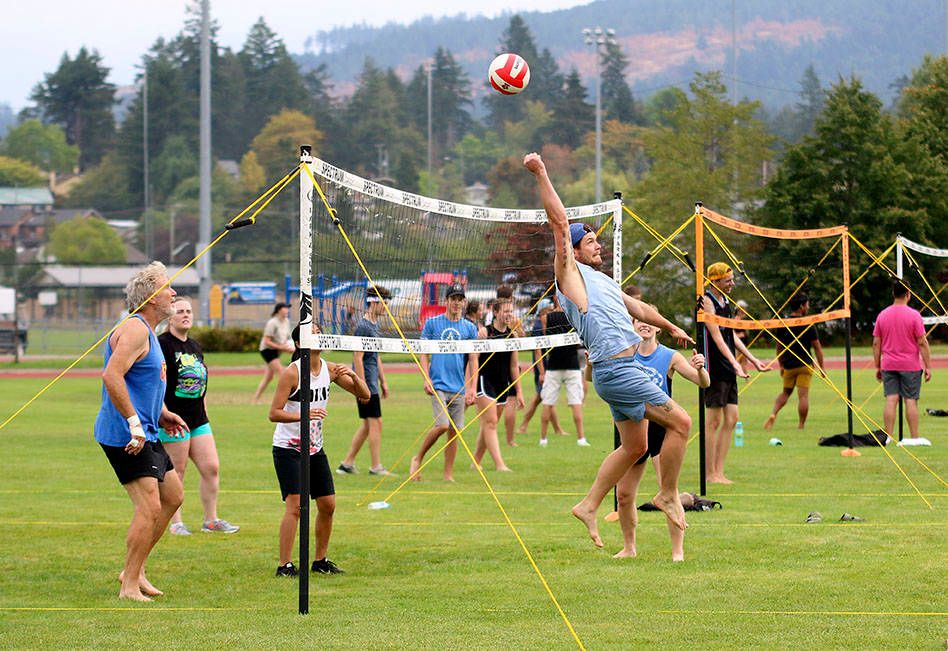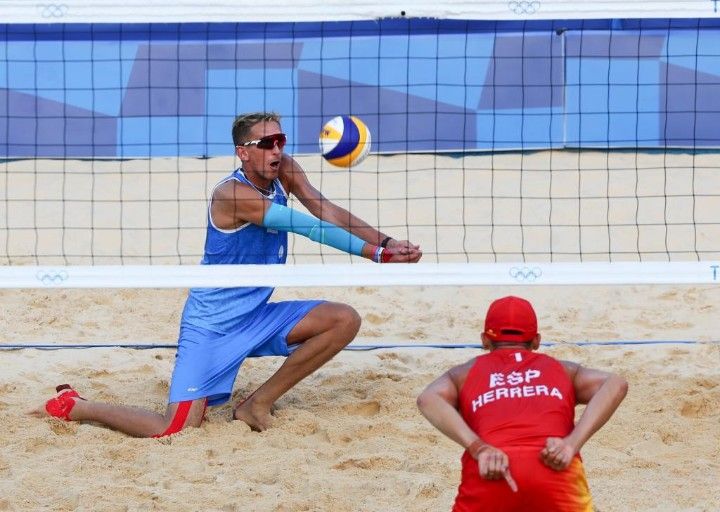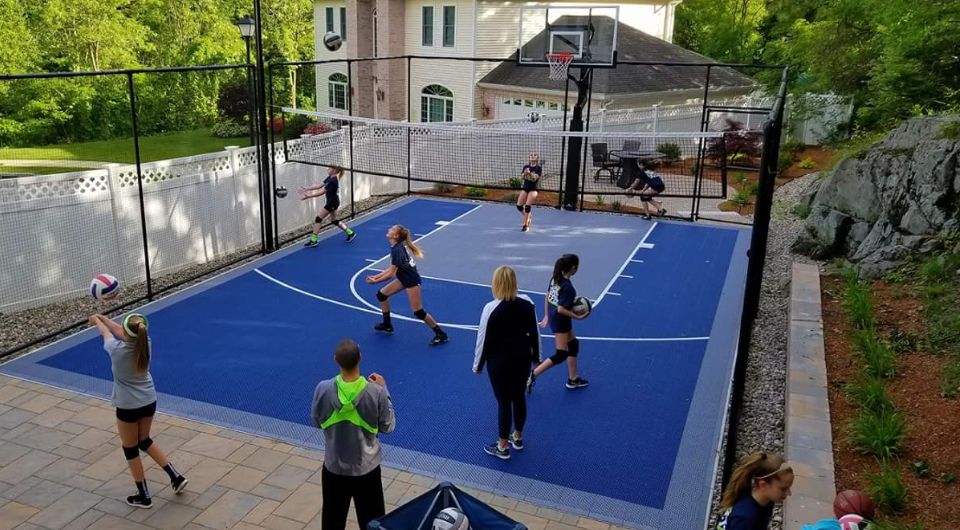Blog Introduction: Volleyball is a highly popular sport that requires a specialized court for proper play. A standard volleyball court has unique features that allow players to move around quickly, jump high, and execute complex plays. However, it's not just about size and shape, but also the dimensions, the line markings, and the net height. This blog post will cover all the essential elements of a volleyball court, so if you're a beginner or just looking to brush up on your knowledge, read on!
Blog Body: The first thing to know about a volleyball court is its size and shape. A standard volleyball court is rectangular, measuring 18 meters long and 9 meters wide. The court is divided by a centerline with two halves, each measuring 9 meters by 9 meters. The net runs vertically across the centerline, dividing the court into two halves. The net measures 2.43 meters high for men's games and 2.24 meters high for women's games.
The court is further divided into smaller sections, each with a specific purpose. The front and back rows are delineated by two parallel lines that run along the length of the court and are 3 meters apart. The attacker's box is marked by two diagonal lines, extending from the corners of the centerline to the back of the court. This is where the players line up for their attacks. The service line is located 9 meters from the net and runs parallel to it.
The line markings on a volleyball court serve a crucial role in determining the legality of a play. There are several lines on the court, including the boundary lines, attack lines, and centerline. The boundary lines surround the court and determine if a ball is in or out of bounds. The attack line is set 3 meters back from the net and marks the limit beyond which backcourt players cannot proceed with their attack. The centerline runs beneath the net, dividing the court into two sides, and marks the limit to the number of players who can touch the ball consecutively.
The location and height of the net are essential elements of a volleyball court. The net is held up by polls on either side of the court, and the top of the net must be exactly 2.43 meters for men's matches and 2.24 meters for women's matches. The net measurements are critical to ensure that the ball moves at the proper speed and height. However, the height of the net can be adjusted for younger players or those in casual settings.
Volleyball courts require proper maintenance and preparation for proper play. A volleyball court must be flat, level, and free of debris or obstructions. The court surface should be firm but not overly hard, with a high-quality material covering the ground. It's also essential to ensure that the net is well-tensioned, and the polls are correctly anchored. Some factors like weather conditions can impact the court surface, so take precautions during times of heavy rainfall or extreme climate.

FAQs About Volleyball Court
What is the volleyball court size?
The official size of a volleyball court is 18m (59 feet) long by 9m (29.5 feet) wide. The court is divided into two 9m (29.5 feet) halves by a center line. The attack line, which is 3m (9.84 feet) from the center line, marks the area where the ball is put into play. The service line, which is 4.5m (14.76 feet) from the net, marks the area from which the ball is served. The court is surrounded by an area of free space at least 3m (9.84 feet) wide.
What is a volleyball court called?
A volleyball court is typically called a 'volleyball court' or a 'volleyball court area'. It is a rectangular area that is usually split into two halves by a net and is used for playing the sport of volleyball. The court is usually marked out with lines to indicate the boundaries of the court, and the net is usually placed at a height of 7 feet and 11 5/8 inches for men's volleyball and 7 feet 4 1/8 inches for women's volleyball.
How many feet is a sand volleyball court?
A sand volleyball court is typically a rectangular area that measures 16 meters (52.5 feet) long and 8 meters (26.2 feet) wide. The court is divided into two equal parts by a net that stands 2.43 meters (8 feet) high for men's and women's competition and 2.24 meters (7.3 feet) for junior competition.
How many players can be on the volleyball court?
The official rules of volleyball state that a match should be played with six players on each side of the court. However, there are variations of the game that allow for more players. For example, beach volleyball can be played with two, three, or four players on each side.
What is the ratio of volleyball courts?
The standard volleyball court is 18 meters long by 9 meters wide (59 feet by 29.5 feet). The court is divided into two 9-meter halves by a center line. The attack line is 3 meters (9.8 feet) from the center line. The end lines are also the sidelines. The service line is 4.5 meters (14.7 feet) from the net. The net is 2.43 meters (7.97 feet) high for men and 2.24 meters (7.35 feet) high for women.
What is the pole in volleyball?
Pole in volleyball is a term used to refer to the outside blockers or players who are positioned at the net in front of the hitter. They are typically the tallest players on the court and are responsible for blocking and defending against opposing hitters. They also help set up the offense by providing additional defense and blocking opportunities.
Conclusion: A volleyball court is a complex structure with many critical features that require proper maintenance and care. Whether you are a beginner or an experienced player, having a good understanding of the court specifications ensures that you play the game correctly and safely. We hope this post has given you the information you need to familiarize yourself with the details of a volleyball court. Keep playing and have fun!












